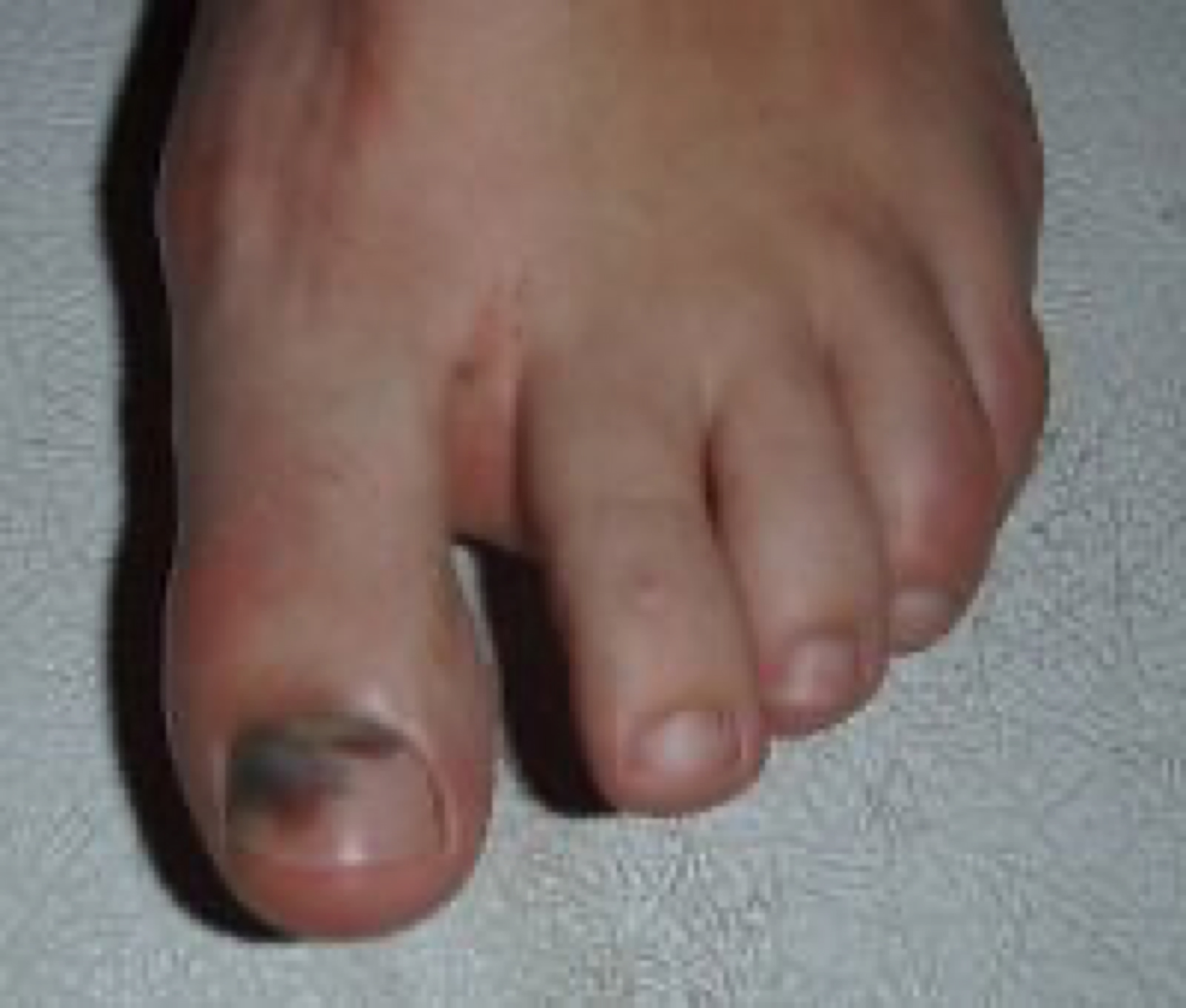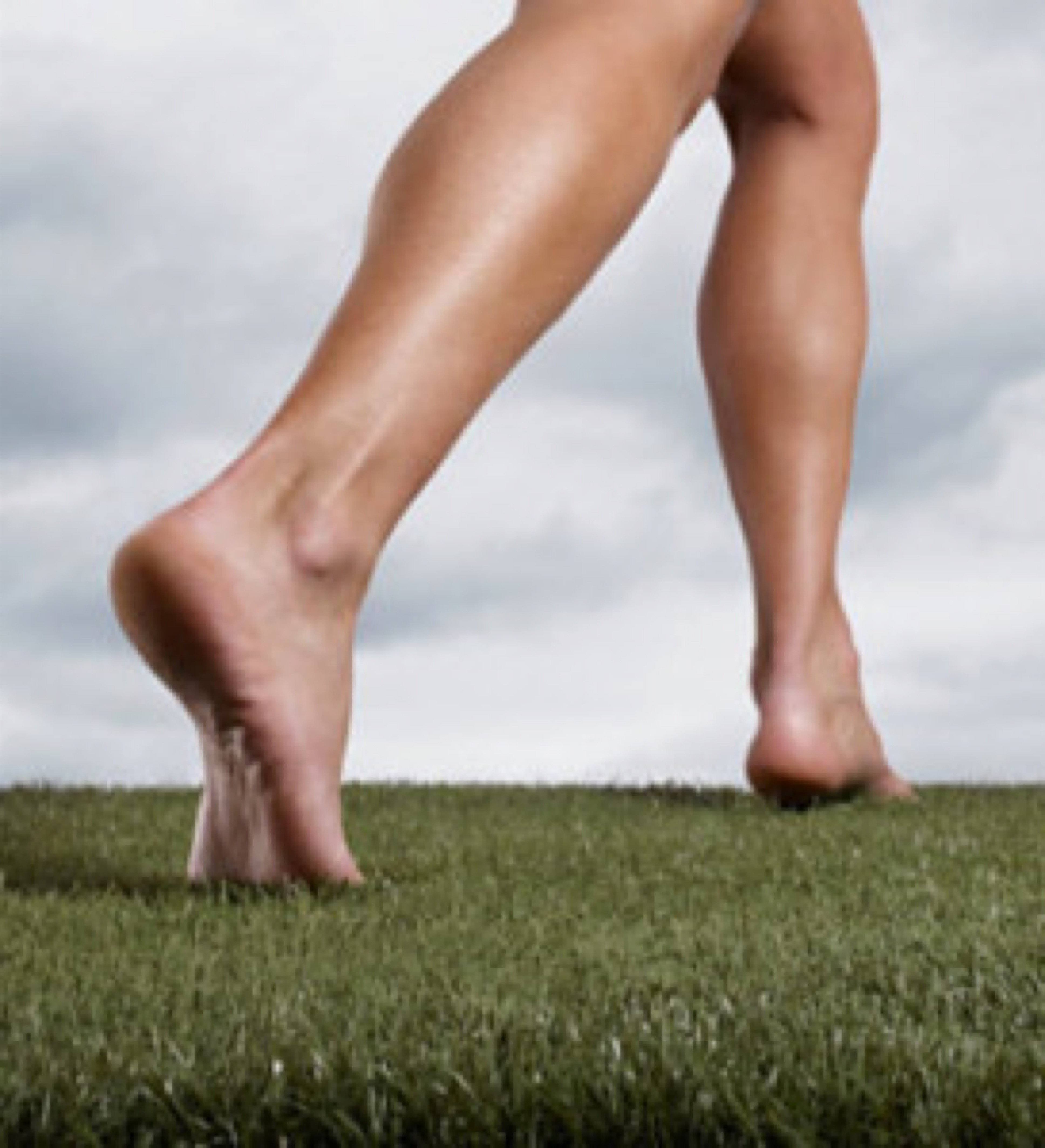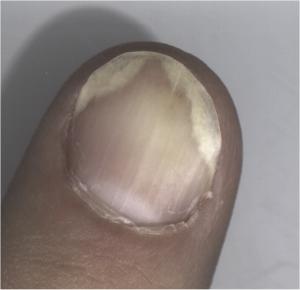The Black Under Your Toenails & Is This Fungus?
Women in particular become quite concerned when they notice black under a toenail – especially if it is summertime and their feet are on show. There are lots of different reasons why toes become black under the nail and they are not all because of fungus although this is the most common cause.
When black under your toenail is caused by fungus
The most likely cause for black toenails are dermatophytes - microscopic organisms that grow under the nail bed and thrive in warm, damp conditions.
And we all know how easy it is for feet to provide such conditions with excessive sweating, keeping our feet confined in shoes for long periods of time and then perhaps not washing and drying them properly at the end of the day.
When we develop a toenail fungus, our nails can become discolored – perhaps yellow, brown, green or of course black. When the toenail is black, it is often accompanied by other symptoms such as brittleness, crumbling or cracking. The nail can be thicker and become dull looking.
Should the black nail become separated from the nail bed, you can feel pain and discomfort when walking or wearing shoes. And the worst symptom could be an unpleasant odor emanating from under the black nail. While treating with prescription drugs is not recommended because of their limited success rate and possible serious side effects, some will consider soaking their feet in beer or vinegar (because of their antifungal properties) to be a sensible route to take.
Obviously, it is best to treat any fungal presence as quickly as possible and one way of sticking to the natural route is the safe and gentle use of H-Nail Fungus Formula. A black toenail treatment will not achieve success overnight but with a little patience and care, you will be successful while at the same time avoiding those perfect conditions that brought about the fungus in the first place.
Prevention means avoiding walking barefoot in public areas especially when they are damp; ensuring ventilation of the feet; and keeping them dry and exposed to fresh air as much as possible.
But what are the other reasons for black under your toenail?

Runners and joggers are prone to getting a black toenail from wearing new shoes or running and sweating in shoes without socks because as you walk or run, your foot slides forward in your shoe, causing friction between the toes and the top, front and sides of the shoe with each step.
Add swelling feet and compression by your socks and shoes into the equation and you end up with a damaged toenail and nail bed. It is the presence of blood that colors the nail black. Obviously treatment means resting and keeping the foot out of a shoe for the next day or so.
If there is no improvement, you should consider medical attention as toe infections can lead to more serious problems if left untreated. In the same way, a black toe nail is also possible as a result of a trauma or injury such as dropping something heavy onto it so that bruising leads to blood forming and collecting under the nail bed.
Even cutting your nails too short can put you at risk for developing fungus as cuts may lead to infection. Whatever the reason for black under the toenails, always keep the nails carefully trimmed as a way to prevent rubbing and more irritation; soak and carefully file down and moisturize thickened toenails. Wear shoes that are comfortable and fit well with enough room to eliminate pressure and friction on the toenails.
Nail psoriasis is another reason for black under the toenail
One condition you may not have considered is nail psoriasis which can be especially painful. While nail psoriasis usually accompanies the skin condition of psoriasis or psoriatic arthritis, in rare cases it appears on its own.
Psoriasis usually runs in families and the symptoms in the nails are likely to be:
- Little pits in your nails or pitting of the nail matrix. These develop when cells are lost from the nail's surface.
- Clear yellow/red nail discoloring that looks like a drop of blood or oil under the nail plate.
- A white area separating and lifting from the nail plate, caused by pockets of air. Sometimes there is also inflamed skin around the nail.
- Crumbling and total loss of the nail due to psoriasis causing weakening of the nail matrix.
- Lines going across the nails side to side. Other black lines may run tip to cuticle when the tiny capillaries in the tip of your fingers bleed between the nail and the nail bed.
- Thickening of the skin under your nail which can also lead to loosening of the nail when you may develop a white area where it is separated from the skin underneath your nail. It usually starts at the tip of the nail and extends toward the root, sometimes leading to an infected nail bed.
- Redness of the pale arched area at the bottom of your nail when the capillaries under the nail become congested.
- Arthritis of the fingers with nail changes.
Nail psoriasis can also occur together with fungal infections of the nail.
The treatment of nail psoriasis is part of treatment of psoriasis.
Sources
Natural Medicines. Oregon grape. https://naturalmedicines.therapeuticresearch.com. (Accessed Feb 13, 2021).
Kermott CA, et al., eds. Psoriasis. In: Mayo Clinic Book of Home Remedies. 2nd ed. Time; 2017.
.
Bolognia JL, et al., eds. Ultraviolet therapy. In: Dermatology. 4th ed. Saunders Elsevier; 2018. https://www.clinicalkey.com. (Accessed Feb 13, 2021).
Bolognia JL, et al., eds. Systemic immunomodulators. In: Dermatology. 4th ed. Saunders Elsevier; 2018. https://www.clinicalkey.com. (Accessed Feb 13, 2021).




